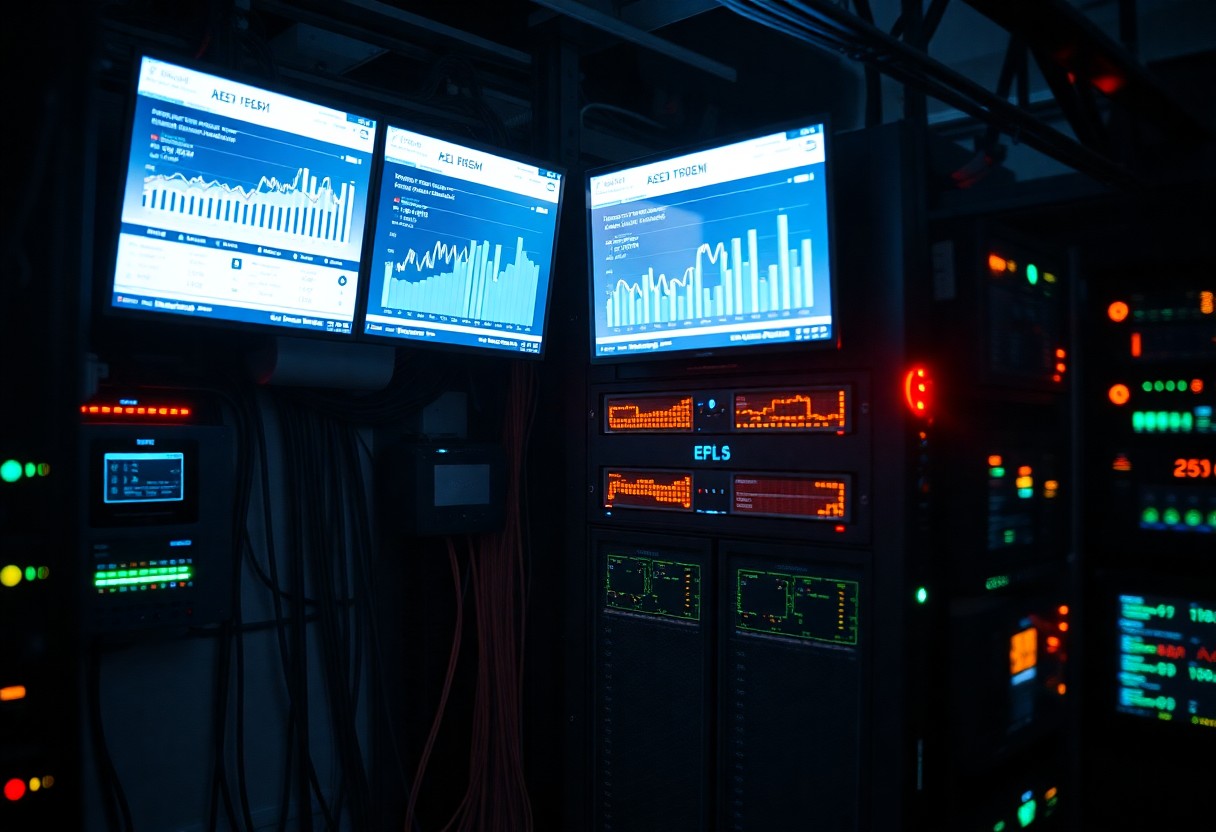
A Step-by-Step Guide to Automating Your Ad Bids with AI.
This guide will empower you to streamline your advertising efforts by leveraging AI technology for automated bid management. As digital advertising becomes increasingly competitive, utilizing AI can enhance your bidding strategies, optimize performance, and save you valuable time. You’ll learn how to set up automated bidding systems tailored to your specific needs, ensuring that you maximize your advertising budget while driving targeted traffic to your campaigns. Let’s explore the steps necessary to integrate AI into your ad bidding process effectively.
The Psychology of Bidding: Insights from Behavioral Economics
Understanding the psychological aspects of bidding can enhance your advertising strategies. Behavioral economics reveals how cognitive biases and emotional triggers influence consumer actions and decision-making. By leveraging these insights, you can optimize your bidding strategies to reflect the motivations and perceptions of your audience, leading to more effective ad placements and improved return on investment.
The Role of Bias in Ad Bidding
Cognitive biases can significantly affect how marketers approach bidding. Factors such as anchoring bias may lead you to focus too heavily on past performance data while overlooking potential shifts in market dynamics. This can result in miscalculating bid amounts and ultimately impact ad visibility. Recognizing these biases allows you to recalibrate your strategy and make more informed bidding decisions.
Decoding Consumer Behavior for Better Bid Decisions
Your ability to understand consumer behavior plays a pivotal role in successful bidding. Analyzing trends, preferences, and purchasing patterns can inform your bid strategies effectively. For example, utilizing tools like Google Analytics and social media insights helps identify peak buying times or popular product categories, assisting in aligning your bids with consumer demand.
To decode consumer behavior effectively, consider integrating advanced analytics tools that track user engagement across platforms. Understanding metrics such as click-through rates (CTR) and conversion data can reveal insights about what drives your audience. By identifying correlations between consumer behavior and bid effectiveness, you can adjust your bidding strategy in real time, thus maximizing your ad spend efficiency and ensuring your budget aligns with market demand fluctuations. Embrace A/B testing to validate assumptions and refine your approach based on real-world data. This nuanced understanding of consumer behavior not only aids in tactical decision-making but also fosters long-term relationships with your audience.

Harnessing AI: Technologies that Transform Ad Bids
Employing AI technologies can significantly streamline your ad bidding process. Advanced algorithms provide insights into optimizing bids based on various parameters, enhancing both efficiency and effectiveness. With continuous learning capabilities, AI not only helps in automatic adjustments but also fine-tunes strategies to align with market demands and user behavior. By integrating these technologies, you can improve your ROI and gain a competitive edge in the digital landscape.
Machine Learning Algorithms in Action
Machine learning algorithms analyze historical data and identify patterns that inform bidding strategies. These systems intelligently adjust bids in real-time, responding to changing market conditions and user engagement metrics. By employing such algorithms, your ad spend can be optimized to capture the most valuable audience segments, ultimately increasing conversions.
Natural Language Processing and Ad Targeting
Natural language processing (NLP) allows you to analyze customer sentiment and preferences by examining the language used in online interactions. This understanding enables more precise targeting of ads, making your campaigns more relevant and appealing to potential customers. Techniques like sentiment analysis can guide your messaging and improve engagement rates.
NLP tools can dissect large volumes of text data from social media, reviews, and forums, offering insights into consumer attitudes. By leveraging these insights, you can create tailored ad copy that resonates directly with your target audience’s interests and emotions, leading to higher click-through rates and improved overall campaign performance.
Predictive Analytics: Anticipating Market Changes
Predictive analytics utilizes historical data to forecast future trends, empowering you with the ability to make informed bidding decisions. By analyzing user behavior, seasonal trends, and market fluctuations, predictive models can suggest optimal bid amounts to maximize exposure during peak times.
This approach allows you to stay ahead of the curve in a rapidly changing advertising landscape. For example, leveraging predictive analytics can help you identify upcoming events or shifts in consumer behavior, enabling you to adjust bids proactively. Brands using predictive models have seen a significant uplift in campaign performance, with increases in customer acquisition rates and overall engagement. The more accurately you can anticipate trends, the more effectively you can allocate your ad budget to meet market demands.
Crafting Your Automated Bid Strategy: Practical Steps
Creating an effective automated bid strategy requires careful planning and execution. You’ll need to integrate your campaign’s goals with the capabilities of AI tools. Start by setting clear parameters that align with your marketing objectives, and adjust your bidding strategies accordingly to maximize results.
Defining Goals: ROI, Engagement, and Reach
Establishing your key goals is fundamental to a successful automated bidding strategy. Focus on metrics such as return on investment (ROI), audience engagement, and overall reach to direct your bid adjustments. By prioritizing these metrics, you ensure that your automated bids are tailored to drive meaningful outcomes for your campaigns.
Setting Up AI Tools for Optimal Performance
Selecting and configuring AI tools that align with your bidding strategy is vital. Tools should be chosen based on their ability to analyze vast amounts of data and adapt in real time. Proper setup includes entering historical campaign data, specifying your budget, and defining performance metrics to guide the AI in making informed bidding decisions.
Once you’ve selected your AI tools, fine-tuning them enhances performance significantly. Input comprehensive historical data to help the system learn your market’s nuances. Specify bidding limits to control costs while allowing the AI the flexibility to optimize bids dynamically. Periodically revisiting these settings ensures they remain aligned with changing market conditions and objectives.
Continuous Learning: Adapting to Campaign Outcomes
AI can learn from each campaign’s performance, making adjustments that enhance effectiveness over time. Analyze the outcome of each automated bid strategy to identify what worked and what didn’t. This learning loop enables you to refine your approach continually and improve future bidding processes.
By closely monitoring outcomes and collecting data after each campaign, you can pinpoint patterns and areas for improvement. Regularly updating the AI model with new insights allows for real-time adjustments that respond to market fluctuations. Setting up a feedback loop helps the AI develop a deeper understanding of audience behavior, ultimately leading to more efficient and profitable bidding strategies.
Measuring Success: Key Metrics to Track
Tracking key metrics is vital for evaluating the effectiveness of your automated bidding strategy. Focus on metrics like Cost-per-Acquisition (CPA), Return on Ad Spend (ROAS), conversion rates, and click-through rates (CTR) to gain insights into how well your campaigns are performing. Each metric offers unique perspectives on the efficiency of your ad spend and overall campaign success, allowing for informed adjustments to improve performance.
Understanding Cost-per-Acquisition vs. Return on Ad Spend
Cost-per-Acquisition (CPA) and Return on Ad Spend (ROAS) are fundamental metrics that provide insight into your advertising effectiveness. CPA indicates how much you are spending to acquire a new customer, while ROAS measures the revenue generated for every dollar spent on ads. Balancing these two metrics can help you maximize profitability by identifying the optimal spending level needed to achieve your acquisition goals.
Interpreting Data: Insights for Future Campaigns
Interpreting campaign data allows you to make informed decisions for future advertising efforts. By analyzing performance trends, you can identify which ads resonate with your audience, leading to improved targeting and content. Use historical data to predict outcomes, refining your strategies based on successful elements while eliminating underperforming aspects. This continuous optimization fosters higher conversion rates and better overall campaign performance.
For example, if data reveals that a certain ad creative consistently achieves a lower CPA, you can allocate more budget toward that campaign or replicate its key elements in future ads. Analyzing audience demographics can uncover shifts in behavior, enabling you to realign targeting strategies accordingly. Additionally, testing different bidding models and ad placements while assessing the outcomes can uncover new opportunities for optimizing your return on ad spend. Leveraging insights in this manner not only improves immediate campaign results but also strengthens your overall advertising strategy over time.
The Ethical Implications of Automation in Advertising
As the advertising landscape transforms, automation raises significant ethical concerns. You must consider how reliance on AI influences consumer behavior, data privacy, and accountability. Automated systems can unintentionally perpetuate biases present in training data, impacting targeting and engagement strategies. Ensuring fairness and transparency in your automated campaigns not only protects consumers but also builds a responsible advertising ecosystem.
Balancing Automation with Human Insight
Automation shouldn’t replace human expertise; rather, it should augment it. While AI offers efficiency and data-driven insights, your intuition and understanding of market nuances remain vital. A hybrid approach allows you to leverage automated tools for real-time adjustments while integrating your strategic vision to navigate campaign complexities and brand messaging effectively.
Transparency and Trust in AI-Driven Campaigns
Transparency in AI-driven advertising fosters trust with your audience. By clearly communicating how algorithms make decisions, you enhance consumer confidence in your brand. Utilizing clear metrics and reporting can demystify the automation process, helping consumers understand the value behind personalized ad experiences, thus reinforcing trust in your marketing efforts.
Fostering transparency involves sharing information on data usage and decision-making processes. For instance, providing insights into how customer data informs your ad bids can build consumer comfort and confidence in your strategies. Tools that allow customers to opt-out or control their data usage further enhance trust. Research shows that brands demonstrating transparency in their marketing practices often see a boost in consumer loyalty and engagement, solidifying long-term relationships with their audience. Connecting automated processes to human oversight emphasizes accountability, further strengthening consumer trust in your campaigns.
Final Words
Upon reflecting, you now possess the knowledge to effectively automate your ad bids using AI. By following the outlined steps, you can enhance your advertising efficiency and maximize your returns. Embracing AI will not only streamline your process but also provide you with valuable insights into your bidding strategies. Implementing these tactics will empower you to stay ahead in a competitive market, ensuring your ads perform optimally while reducing manual oversight. Your journey towards smarter ad management begins with these actionable strategies.


